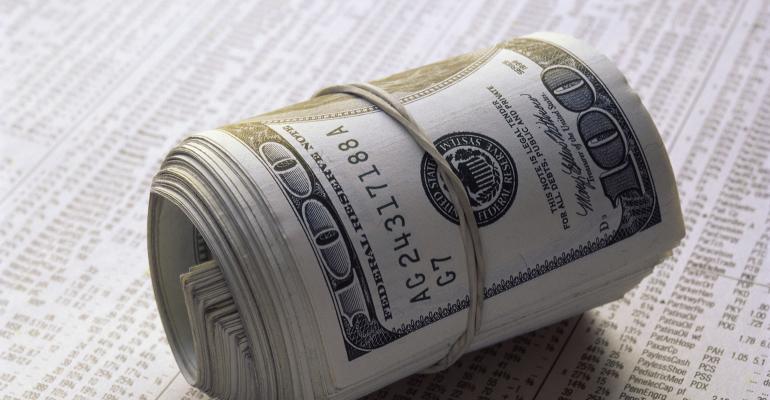(Bloomberg) -- Fixed-income ETFs are finally all living up to their name.
The most aggressive Federal Reserve tightening in decades has boosted rates on Treasury bills back above the annual expense ratios of all US exchange-traded funds buying ultra-short bonds.
That means for the first time in well over a year, funds like the $21 billion iShares Short Treasury Bond ETF (ticker SHV) are reliably paying out dividends.
The absolute sums aren’t necessarily impressive -- SHV’s July payout amounted to roughly 8 cents -- but it’s emblematic of a sea change in markets. Yields across the fixed-income spectrum are rising, eroding the “There Is No Alternative” psychology that pumped up equities for the better part of a decade.
Clipping coupons on even the shortest maturity debt is now a possibility -- reviving the investment thesis behind parking money in T-bills versus simply holding cash.
“If you fast-forward to the end of the year, based on what’s being priced in in terms of Fed action, we could be at 3, 3.5% just in a cash-like product,” Stephanie Pierce, CEO of Dreyfus, Mellon and ETFs for BNY Mellon Investment Management, said in a Bloomberg Radio interview. “I would go as far as to say it’s pretty sexy relative to the liquid alts and the other esoteric products that people have been using to get yield.”
Calculation and payment of monthly dividends for a passive bond ETF tends to be a systematic process. It depends on where the yield of the fund’s holdings are relative to its fee -- often at the time the securities are added to the ETF.
The expense ratio for SHV, which buys government notes with a maturity of a year or less, is 0.15%. When the Fed slashed rates to zero in March 2020, short-term bill yields cratered. That gradually fed into the fund as it rolled into new securities, and SHV halted monthly payments at the end of 2020.
Regular dividends resumed this April after the central bank began raising rates a month earlier, and have increased every month since, according to Bloomberg data.
It’s a similar story for the $21 billion SPDR Bloomberg 1-3 Month T-Bill ETF (BIL), which has an expense ratio of 0.14%. Rates on one- and three-month T-bills have now climbed to 1.2% and 1.9%, respectively, from 0.03% and 0.04% at the start of the year. BIL ended regular payouts in mid-2020 and restarted with a 3 cent distribution in May, followed by 5 cents in June.
While the payments amount to pennies at the moment, they’re poised to increase further as the Fed battles the hottest inflation readings in four decades. Minutes released Wednesday from last month’s meeting revealed policy makers are prepared to shift to an “even more restrictive stance” to cool price pressures, with another jumbo-sized hike on the table for July.
Money has flooded into ultra-short ETFs this year as volatility sweeps across financial markets. SHV has taken in more than $7.9 billion so far, the most of any fixed-income ETF in the US, while BIL’s $7.3 billion haul is the second-largest.
It’s the relative stability of the ETFs that’s attracting investors rather than the fact that the funds are now paying out pennies, according to Bloomberg Intelligence’s Eric Balchunas. Price-wise, both SHV and BIL are almost flat for the year, compared to an 11% drawdown in the $81 billion iShares Core U.S. Aggregate Bond ETF (AGG).
“A lot of things are scary out there, and I think a lot of these cash ETFs are being used for their sideline aspect,” ETF analyst Balchunas said. “If you can get a little more yield on your cash position, that’s a good thing.”





